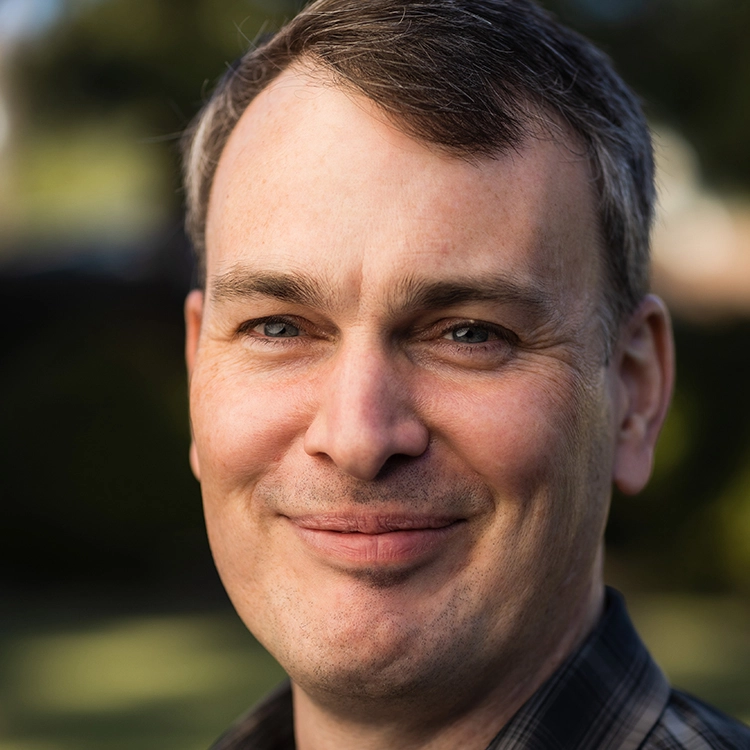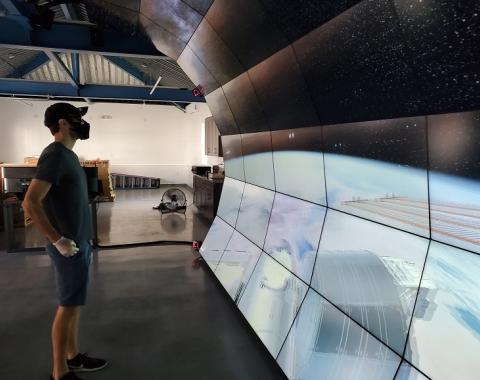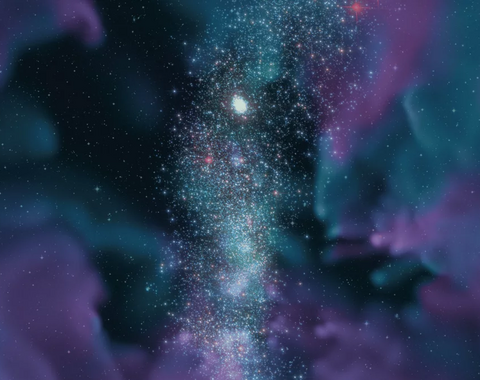Probing the Ancient Universe
The first galaxies were formed a few hundred million years after the Big Bang, which started the universe as a hot, murky soup of extremely energetic particles.
As this material expanded outward from the initial explosion, it cooled, and the particles coalesced into neutral hydrogen gas. Some patches were denser than others and, eventually, their gravity overcame the universe’s outward trajectory and the material collapsed inward, forming the first clumps of structure in the cosmos.
The density differences that allowed for structures both large and small to form in some places and not in others have been a longstanding topic of fascination. Carnegie astronomers are pursuing novel approaches, both observational and theoretical, to understand these early structures and to reveal how the first generation of galaxies were shaped and molded by their surroundings.
Galaxies continued to accrete material and grow, developing supermassive black holes at their centers. Carnegie astronomers are using the most-cutting edge telescopes and instruments available to probe the intense star formation that happened during this period and to understand why some galaxies stopped forming stars despite the bustle of activity occurring around them. This will help them understand the relationships between different generations of galaxies and the physics that underpin our cosmos.
The density differences that allowed for structures both large and small to form in some places and not in others have been a longstanding topic of fascination. Carnegie astronomers are pursuing novel approaches, both observational and theoretical, to understand these early structures and to reveal how the first generation of galaxies were shaped and molded by their surroundings.
Galaxies continued to accrete material and grow, developing supermassive black holes at their centers. Carnegie astronomers are using the most-cutting edge telescopes and instruments available to probe the intense star formation that happened during this period and to understand why some galaxies stopped forming stars despite the bustle of activity occurring around them. This will help them understand the relationships between different generations of galaxies and the physics that underpin our cosmos.
Recent Events
Using the Webb Telescope to Pull the Curtain From Dusty Galaxies - Dr. Jeff Rich
The Webb Telescope's New Era in Astronomy - Dr. Jane Rigby
Galactic Transformations Under the Magnifying Glass - Dr. Drew Newman
Seeking Our Origins in Stars and Galaxies - Dr. Alan Dressler

Using the Webb Telescope to Pull the Curtain From Dusty Galaxies - Dr. Jeff Rich

The Webb Telescope's New Era in Astronomy - Dr. Jane Rigby

Galactic Transformations Under the Magnifying Glass - Dr. Drew Newman

Seeking Our Origins in Stars and Galaxies - Dr. Alan Dressler



















